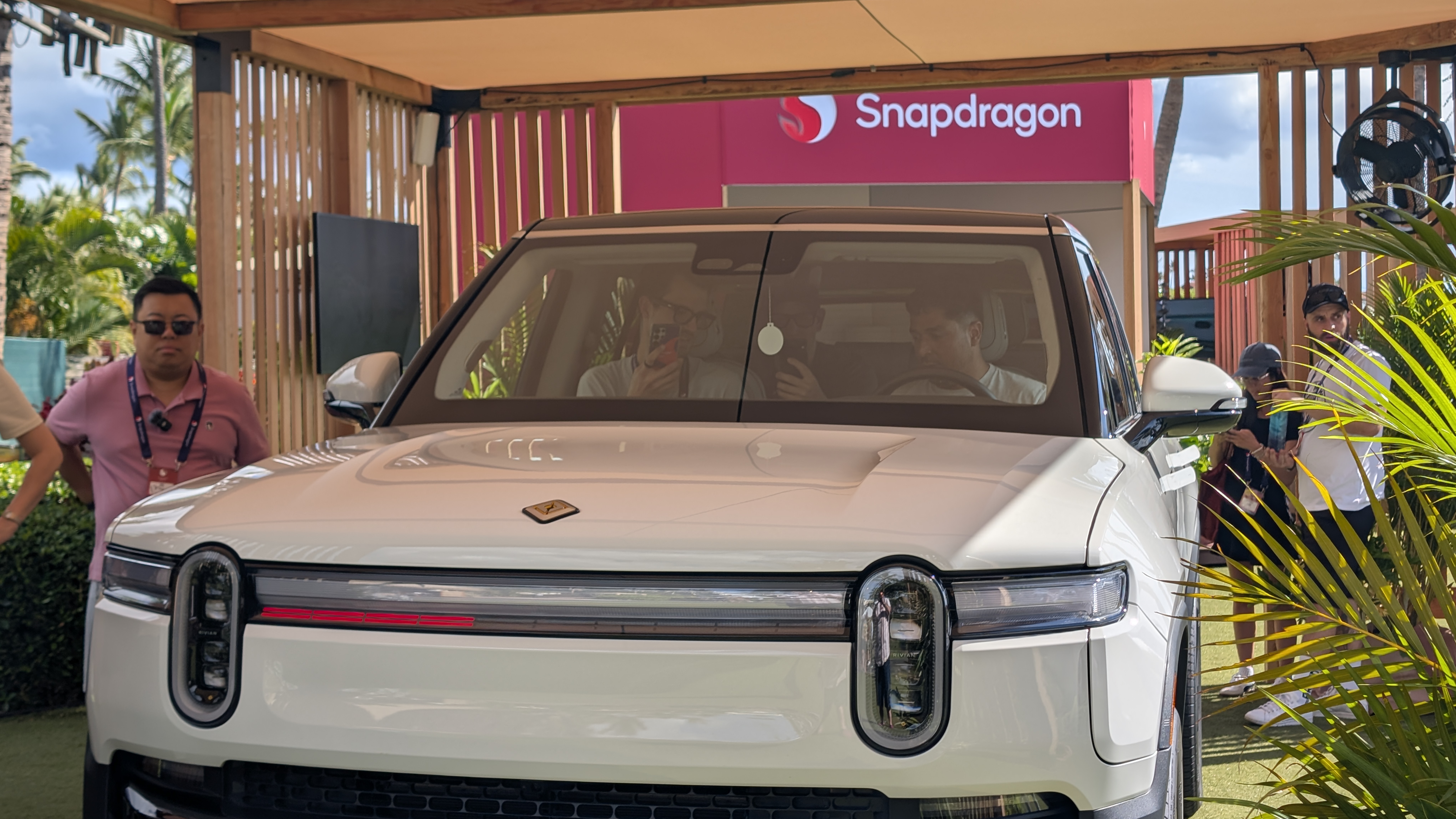Qualcomm has historically been quiet about its automotive aspirations, preferring to focus attention on its Snapdragon mobile and laptop processor offerings. That might be changing. The company flew me to its Qualcomm Snapdragon Summit on Maui to see its latest Snapdragon Elite chips, and this year it’s all about automotive. The Snapdragon Digital Chassis has been powering cars for a couple of years, but now Qualcomm is honking its Elite horn with Snapdragon Ride Elite and Snapdragon Cockpit Elite systems on a chip. And when Qualcomm says ‘Elite,’ it means power and AI. AI is coming to cars in a big way.
I don’t just mean self-driving AI, though that’s certainly a big part of Qualcomm’s technology. The new Snapdragon Ride Elite chipset can manage up to 40 different sensor types, including radar, LiDAR, cameras, microphones, and infrared. It will use AI to manage all of that data and assist with driving. Qualcomm suggests the Ride Elite will be able to handle Level 3 and Level 4 automated driving, which means you’ll still need to keep your hands on the wheel, or at least close to it.
Qualcomm AI means much more than driving automation. There will be new features tailor-made for an in-car experience, though a lot of what Qualcomm is showing off right now sounds like smartphone AI transported to the vehicle. You’ll be able to use AI to set a reminder, or it might find the closest Starbucks if it thinks you need some caffeine. Your kids can ask for last-minute homework help on the way to school.
Some of those sensors managed by Snapdragon will be pointed inside the car. Qualcomm imagines car makers using infrared cameras to not only detect the number of occupants, but also to read our body positions and even facial expressions. This technology is similar to Apple’s FaceID, which also uses infrared cameras to read the contours of your face.
Once the AI is aware of the passengers, it can help with safety features, like making sure you don’t leave pets or small children behind by accident. It will detect if you start to fall asleep and help keep you alert. It might also detect if your children in the back are asleep, and quiet the music and road alerts in their zone.
Zones will be a big part of the next generation of automobile cabins. Using AI, Qualcomm says the Snapdragon will be able to direct sound environments, climate changes, and other customizations only at one passenger or another. You might listen to music as you drive, while your passenger watches a movie and the kids in the backseat play games.
Getting Unreal graphics help from Epic Games
Table of Contents
All of that will happen in the car, and Qualcomm imagines a car that has door-to-door displays. The new Snapdragon Cockpit Elite platform can drive up to 16 4K displays. Some of those will be your instrument gauge, your cockpit controls, and your rearview camera. Other displays will offer entertainment and controls to all of your passengers. Overkill? Maybe not.
The most interesting partner to appear with Qualcomm during the automotive keynote at the Snapdragon Summit was Epic Games. Epic has ported its Unreal Engine to cars. The same software that provides the backbone for some of the best video games, including Fortnite, Cyberpunk 2077, and Star Wars Jedi: Fallen Order.
RIvian is using Unreal Engine on its console displays for maps, vehicle status, and pretty much everything else, and it looks unreal. Unreal Engine is great at rendering a 3D environment, so it makes an obvious fit for maps, looking at a diagnostic view of your car, and controlling the climate.

This Halloween, Rivian owners have been treated to car costumes that make the interior look like K.I.T.T. from Knight Rider or the DeLorean from Back to the Future. You can’t drive with the costume on, but it still looks fantastic and is fun to show off.
Where we’re going we won’t need roads … or at least buttons
Qualcomm makes the brains, but it relies on car makers and software developers to make the thoughts
I still worry about the future of cars without physical buttons and controls, because I personally don’t have the dexterity to tap tiny touchscreen buttons while I’m driving. Thankfully, I won’t have to worry about touching controls, because the car’s AI will handle everything.
I don’t need to twist the temperature dial, I can just say “I’m hot” and the car will turn on the air conditioner. If my friend in the back says “I’m getting cold,” it will warm their zone. With intelligent AI assistance, I’ll be able to ask for anything that used to have its own button. I’ll just say ‘play Chappell Roan;’ or ‘turn on my emergency lights.’
Of course, relying on voice for control presents a new set of problems, especially for folks who have difficulties speaking, or an accent the car finds unfamiliar. Will the car know how Chappell Roan pronounces her name?
I wish I could tell you much more about what AI will do in your car, but we really don’t know yet. Qualcomm makes the brains, but it relies on car makers and software developers to make the thoughts. When Qualcomm launches a new chipset, we get one or two solid examples of what the future can hold, but we need to wait for RIvian, Mercedes, and myriad Chinese electric car makers like Great Wall Motors and Li Auto to develop and evolve the features.
Your car will get software updates and apps, just like your phone
Hearing from Li Auto, Rivian and Mercedes at the Qualcomm Snapdragon Summit, it’s clear that what excites these car makers the most is the way Snapdragon Elite chipsets will make it easier to update a car’s software and features. The entire software update process is going to change for cars.
Today, updating car software is a complicated process that requires a smartphone connection/ Premium electric cars from Rivian and Tesla get software updates and major new features over-the-air, thanks to always-on connectivity and powerful processing.
That same concept is coming to more cars in the future, and when all of your car controls are based in software, that could mean you step into an entirely new vehicle after an overnight update.
Do you get annoyed when Apple updates your iPhone and suddenly your photo gallery looks totally different? Wait until that happens to your Mercedes cockpit. If it sounds like cars are getting dangerously close to being like smartphones, you don’t know the half of it.
Apps are coming to cars in a big way, and not just the apps you’d expect. Sure, there will be games you can play in the car. Angry Birds was on Qualcomm’s list of car apps, and Epic says Fortnite is a popular request from car customers. But Qualcomm also imagines your car will be a space for productivity.
You’ll run Zoom meetings in your car and see your participants on the dashboard. When you drive by a billboard for something you want, you’ll open Amazon on your dash to buy it. If you want to stop for the night, open Booking.com through your car, not your phone, and then your car AI will automatically map its way to your hotel room.

You can even buy new additional software features through the car. Right now, Tesla owners can pay extra to buy the contentious Full Self Driving software update, but in the future, more cars will offer software updates and new features for an additional fee. You might start with a base model car, then after a year decide you want to pay for something more premium, and it will only take a software update to give you more.
Qualcomm still needs car makers to build upon its vision in order to realize an AI future that will be useful for cars, but GM, BMW, Mercedes and Rivian were all present for the Snapdragon Ride Elite and Cockpit Elite chipset launch.
Rivian wouldn’t comment on when the Elite chips would power its cars, and it also wouldn’t comment on what chipset the upcoming Rivian R3 will use. That car is launching in the right time frame to get Elite Qualcomm status. Reps from BMW told me to look out for an all new vehicle at CES 2025.

























